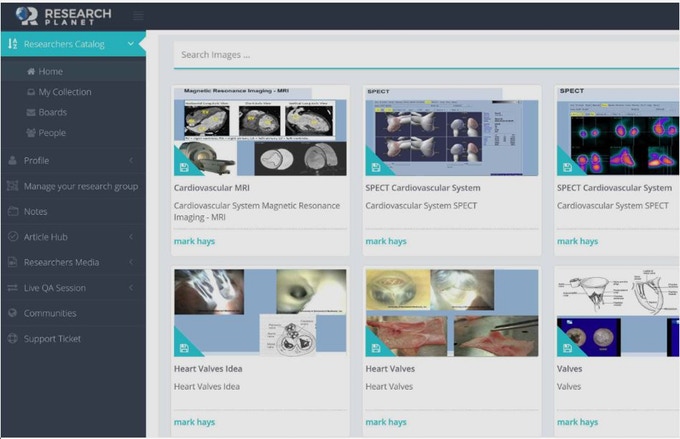In the late 1940s, the jet engine era began in military aviation. The new war machines, however, were plagued by frequent crashes. One day, the U.S. Air Force lost 17 planes and pilots. The planes spun out of control, though air tech services reported the vehicles were in good condition and there were experienced pilots who couldn’t have made critical mistakes. 17 accidents? So, air authorities started to look for another cause of the crashes and found it in the uncomfortable cockpits.
To solve the problem, USAF engineers measured 140 physical parameters of 4.000 pilots to define their average height, arm and leg length, weight, etc. They even measured the distance between pilots’ eyes and ears and the length of their fingers. The aim was to define the average parameters in order to use them in the new cockpit design. The whole idea turned out to be a mistake. None of the 4.000 pilots that took part in the measurements had the average physical parameters. Thus, the new cockpit was even more uncomfortable and risky.

Today, we can see a similar situation on the video conferencing systems market. Zoom is the best known and accepted one. However, different users have different needs, and Zoom does not always meet them. Below we’ve collected 10 alternative solutions for video conferencing that have some interesting benefits.
- GlobalMeet Collaboration
This system allows its users to set up video conferences with up to 125 participants and unlimited duration in its free basic version. Zoom’s free plan offers up to only 40 minutes of group meetings with a maximum of 100 users. So, GlobalMeet is a more efficient choice for small businesses and project teams.
Users can enjoy a wide range of functions such as connection by link without registration, screen sharing, conference recording, integration with other applications, for example, Google or Microsoft calendars.
At the same time, GlobalMeet does not have such an important feature as sending files in a chat. Nevertheless, this system is a good alternative to Zoom, especially for users who want to get longer conferences for less money.
- Proficonf
Proficonf is a cloud service with no apps for computers or mobile devices. This system works in browsers. It is worth noting that Proficonf uses optimized data transfer system, which allows to use the platform even when the internet is slow. Users only need a connection of 256 kbps to take part in video conferences with quite good image quality. If video quality is not a priority, a stable connection can be maintained with only 50 kbps. Proficonf makes it possible to attend meetings with up to 250 users and offers a number of additional features. Among them there is file sharing, video and audio sharing, creating rooms and high-quality conference recording.
- RingCentral
One of the most significant strengths of RingCentral is its own calendar, which provides such functions as integration with other users’ calendars, creating events and explaining access rules to all the participants. Zoom users need to integrate the platform with a separate calendar, like Google Calendar or Outlook. Besides, RingCentral has a mobile app with a user-friendly interface. Many users find this service simpler and more feature-rich than Zoom.
It’s worth noting that RingCentral has a high security level. The system uses technology that allows one to completely rule out unauthorized connections to conferences. This will be especially useful to those who want to avoid Zoombombing, which is quite a widespread issue for the popular app’s users.
- iMind
iMind is one of most feature-rich systems on this list. This solution is well-known among business users, primarily due to its security features. In addition, iMind provides Ultra HD – 4K image quality and high-level sound quality, as well as autoregulation of video and audio depending on users’ data transfer rate.
The browser-based platform offers a number of versions for users with different needs.
One of them is aimed at video conferencing for business, private users and freelancers. Participants can connect to conferences via browsers using WebRTC, hardware MCU, mobile devices, video conferencing terminals and even landline phones.
The second version of iMind offers a wide list of functions for webinars. It allows users to stream 4K videos, connect up to 10 speakers and up to 20.000 guests. Additionally, the system provides webinar room branding functionality.
Finally, the Mind Teams solution. This one includes chat, audio and video call functionality, encrypted data storage and transfer, etc. It has screen sharing, a whiteboard, conference recording and a number of other useful tools.
- MyOwnConference
This service sets itself apart with its flexible pricing. The free version of MyOwnConference can host up to 20 participants. Users can also buy annual, monthly and even daily subscriptions, so you can pay for the service when you actually use it.
MyOwnConference provides some features that Zoom doesn’t have and that make simultaneous work more effective. In particular, this system allows to conduct surveys, annotate the screen, brand the conference room, etc. It should be noted that, unlike Zoom, MyOwnConference does not collect users’ personal data. That’s an important benefit for those who are concerned about the security of their private information.
- Pexip
This platform offers a wide array of advanced technological solutions. Pexip provides an AI system that enables users to reduce distractions and enjoy high-quality online communication. The service has real-time image framing. It automatically crops, pans and tilts the image to adjust the view and make it convenient for the conference participants.
In addition, Pexip offers user-friendly branding options for creating a familiar interface and API for integrating with other solutions: any video system, productivity tool, workflow or calendar. Flexibility and good compatibility are the main strengths of this service.
Pexip’s users may connect to a video conference from any device – a desktop, laptop, smartphone, etc. Pexip also works via a browser, with no installations necessary.
- Whereby
The main target groups of Whereby are small and medium enterprises from such markets as trading, marketing, IT, finance, etc. This service does not require any special software, so it has a lower impact on the devices it’s run on. To use the system, you just need to create an account and then a room for each video conference and invite speakers and guests.
Whereby can be integrated with a number of other popular services, like Google Docs, Trello and Slack. The system allows to join video conferences from a wide range of devices. Whereby uses HTTPS to protect personal data of conference participants.
The paid plans provide video streaming on YouTube and Vimeo and conferences recording. Users consider Whereby one of easiest and most flexible video conferencing systems for simultaneous teamwork.
- GoToMeeting
GoToMeeting is a very smartphone-friendly system, but you can use it on computers and tablets as well. The service offers a pretty standard toolkit. What sets it apart is the number of options for more convenient user experience. For example, users can launch a video conference in just a few seconds and continue the conversation in a chat for further discussion. Each video conference participant may use up to 25 web cameras. Therefore, GoToMeeting allows to create full-fledged conference rooms. Users may also customize their webcam background.
GoToMeeting provides seamless integrations with Microsoft Teams, Outlook, Google Calendar and other popular applications. The system also offers a high security level, including requesting unique passwords to join a session. It also notifies users on any suspicious activity such as attempts to connect from unauthorized devices.
- Fuze
Fuze is cloud platform for voice and HD video calling and conferencing. This system has an intuitive and easy-to-use interface for calling, meeting, chatting and content sharing. Users can start new conferences with just one click.
The service offers quite attractive pricing for international enterprises. They can use a plan with unlimited calls to more than 110 countries.
Fuze allows users to join several video conferences with one device at the same time. The system is a powerful tool for file sharing – it supports all popular file formats including DOCX, PDF, animated PowerPoint presentations, etc. Fuze provides conference recording and records sharing as well.
- Jami
Jami is a Peer-to-Peer communication platform that offers a powerful toolkit for communication, including messaging, voice and video calls and video conferences. The system works through direct connections rather than servers, so it provides great privacy for its users. Another important benefit of P2P is its quite low data rate requirements. At the same time, Jami itself can work as a server for conferences.
The service does not require users’ personal data to create new accounts. Jami uses blockchain for user authorization. Its address book is based on Etherium.
Jami is available for Windows, MacOS, iOS, Android, GNU/Linux and Android TV. The service is completely free.







